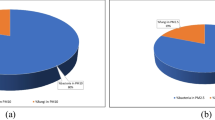Abstract
There is an increasing interest in understanding ambient bioaerosols due to their roles both in health and in climate. Here, we deployed an Ultraviolet Aerodynamic Particle Sizer to monitor viable (fluorescent) bioaerosol concentration levels at city centers (highly polluted) and their corresponding suburbs (near pristine) (total 40 locations) in 11 provinces featuring different climate zones in China between July 16 and 28, 2013. The concentration levels of viable bioaerosol particles (BioPM) of >0.5 µm were measured, and corresponding percentages of BioPM% (biological fraction of total PM) and BioPM2.5% (biological fraction of PM2.5) in particulate matter (PM) and BioPM, respectively, were determined. For some key cities, indoor viable bioaerosol levels were also obtained. In addition, bacterial structures of the air samples collected across these monitoring locations were studied using pyrosequencing. BioPM concentration levels ranged from 2.1 × 104 to 2.4 × 105/m3 for city centers [BioPM% = 6.4 % (±6.3 %)] and 0.5 × 104 to 4.7 × 105/m3 for suburbs [BioPM% = 10 % (±8.7 %)]. Distinctive bioaerosol size distribution patterns were observed for different climate zones, e.g., some had fluorescence peaks at 3 µm, while the majority had peaks at 1 µm. Ambient bacterial aerosol community structures were also found different for different geophysical locations. Results suggest that there was a poor overall relationship between PM and BioPM across 40 monitoring locations (R 2 = 0.081, two-tailed P value = 0.07435). Generally, city centers had higher PM concentrations than suburbs, but not BioPM and BioPM%. Indoor bioaerosol levels were found at least tenfold higher than those corresponding outdoors. Bacillus was observed to dominate the bacterial aerosol community in the air sample.
抽象
大气生物气溶胶在健康与气候变化方面的研究日益受到关注。 此项研究主要利用基于荧光检测的UV-APS于2013年7月16至28号对中国11个省市的高污染城市区及相对洁净郊区的有活性生物气溶胶颗粒进行了监测。结果表明,不管城市还是郊区, 有活性的生物气溶胶浓度水平为104-105/m3。对于不同地理位置,生物气溶胶粒径分布显著不同,大部分在1微米处有荧光峰值,但也有少部分在3微米处。室内生物气溶胶水平为相应户外的至少10倍以上, 其中芽孢杆菌在大气细菌中占主导。






Similar content being viewed by others
References
Xu Z, Wu Y, Shen F et al (2011) Bioaerosol science, technology, and engineering: past, present, and future. Aerosol Sci Technol 45:1337–1349
Després VR, Huffman JA, Burrows SM et al (2012) Primary biological aerosol particles in the atmosphere: a review. Tellus B 64:15598–15638
Wilson SL, Kelley DL, Walker VK (2006) Ice-active characteristics of soil bacteria selected by ice-affinity. Environ Microbiol 8:1816–1824
Attard E, Yang H, Delort AM et al (2012) Effects of atmospheric conditions on ice nucleation activity of Pseudomonas. Atmos Chem Phys 12:10667–10677
Conen F (2011) Interactive comment on “Biological residues define the ice nucleation properties of soil dust”. Atmos Chem Phys Discuss 11:C6635–C6639
DeMott PJ, Prenni AJ, Liu X et al (2010) Predicting global atmospheric ice nuclei distributions and their impacts on climate. Proc Natl Acad Sci USA 107:11217–11222
Bauer H, Kasper-Giebl A, Löflunda M et al (2002) The contribution of bacteria and fungal spores to the organic carbon content of cloud water, precipitation and aerosols. Atmos Res 64:109–119
Amato P, Parazolsb M, Sancelmea M et al (2007) An important oceanic source of micro-organisms for cloud water at the Puy de Dôme (France). Atmos Environ 41:8253–8263
Ariya PA, Nepotchatykh O, Ignatova O et al (2002) Microbiological degradation of atmospheric organic compounds. Geophys Res Lett 29:2077–2080
Herrmann H, Tilgner A, Barzaghi P et al (2005) Towards a more detailed description of tropospheric aqueous phase organic chemistry: CAPRAM 3.0. Atmos Environ 9:4351–4363
Blando JD, Turpin BJ (2000) Secondary organic aerosol formation in cloud and fog droplets: a literature evaluation of plausibility. Atmos Environ 34:1623–1632
Kanakidou M, Seinfeld JH, Pandis SN et al (2005) Organic aerosol and global climate modelling: a review. Atmos Chem Phys 5:1053–1123
Vaïtilingom M, Amato P, Sancelme M et al (2010) Contribution of microbial activity to carbon chemistry in clouds. Appl Environ Microbiol 76:23–29
Jones AM, Harrison RM (2004) The effects of meteorological factors on atmospheric bioaerosol concentrations—a review. Sci Total Environ 326:51–180
Heald CL, Spracklen DV (2009) Atmospheric budget of primary biological aerosol particles from fungal spores. Geophys Res Lett 36:L09806
Huffman JA, Sinha B, Garland RM et al (2012) Size distributions and temporal variations of biological aerosol particles in the Amazon rainforest characterized by microscopy and real-time UV-APS fluorescence techniques during AMAZE-08. Atmos Chem Phys 12:11997–12019
Lighthart B, Shaffer BT (1995) Airborne bacteria in the atmospheric surface layer: temporal distribution above a grass seed field. Appl Environ Microbiol 61:1492–1496
Lighthart B (1997) The ecology of bacteria in the alfresco atmosphere. FEMS Microbiol Ecol 23:263–274
Lighthart B (1999) A hypothesis describing the general temporal and spatial distribution of alfresco bacteria in the earth’s atmospheric surface layer. Atmos Environ 33:611–615
Brodie EL, DeSantis TZ, Parker JPM et al (2007) Urban aerosols harbor diverse and dynamic bacterial populations. Proc Natl Acad Sci USA 104:299–304
Cao C, Jiang W, Wang B et al (2014) Inhalable microorganisms in Beijing’s PM2.5 and PM10 pollutants during a severe smog event. Environ Sci Technol 48:1499–1507
Li J, Li M, Shen F et al (2013) Characterization of biological aerosol exposure risks from automobile air conditioning system. Environ Sci Technol 47:10660–10666
Agranovski V, Ristovski Z, Hargreaves M et al (2003) Real-time measurement of bacterial aerosols with the UVAPS: performance evaluation. J Aerosol Sci 34:301–317
Schloss PD (2009) A high-throughput DNA sequence aligner for microbial ecology studies. PLoS One 4:e8230
Wang Q, Garrity GM, Tiedje JM et al (2007) Naive Bayesian classifier for rapid assignment of rRNA sequences into the new bacterial taxonomy. Appl Environ Microbiol 73:5261–5267
Vaïtilingom M, Deguillaume L, Vinatier V et al (2013) Potential impact of microbial activity on the oxidant capacity and organic carbon budget in clouds. Proc Natl Acad Sci USA 110:559–564
Wei K, Zou Z, Yao M (2014) Charge levels and Gram (±) fractions of environmental bacterial aerosols. J Aerosol Sci 74:52–62
Hospodsky D, Qian J, Nazaroff WW et al (2012) Human occupancy as a source of indoor airborne bacteria. PLoS One 7:e34867
Knibbs LD, He C, Duchaine C et al (2012) Vacuum cleaner emissions as a source of indoor exposure to airborne particles and bacteria. Environ Sci Technol 46:534–542
Acknowledgements
This work was supported by the National Natural Science Foundation of China (21277007, 21477003, and 41121004), the Ministry of Science and Technology of China (2015DFG92040, 2015CB553401), and Ministry of Education (20130001110044).
Conflict of interest
The authors declare that they have no conflict of interest.
Author information
Authors and Affiliations
Corresponding author
Additional information
Kai Wei, Yunhao Zheng, and Jing Li have contributed equally to this work.
Electronic supplementary material
Below is the link to the electronic supplementary material.
About this article
Cite this article
Wei, K., Zheng, Y., Li, J. et al. Microbial aerosol characteristics in highly polluted and near-pristine environments featuring different climatic conditions. Sci. Bull. 60, 1439–1447 (2015). https://doi.org/10.1007/s11434-015-0868-y
Received:
Accepted:
Published:
Issue Date:
DOI: https://doi.org/10.1007/s11434-015-0868-y




